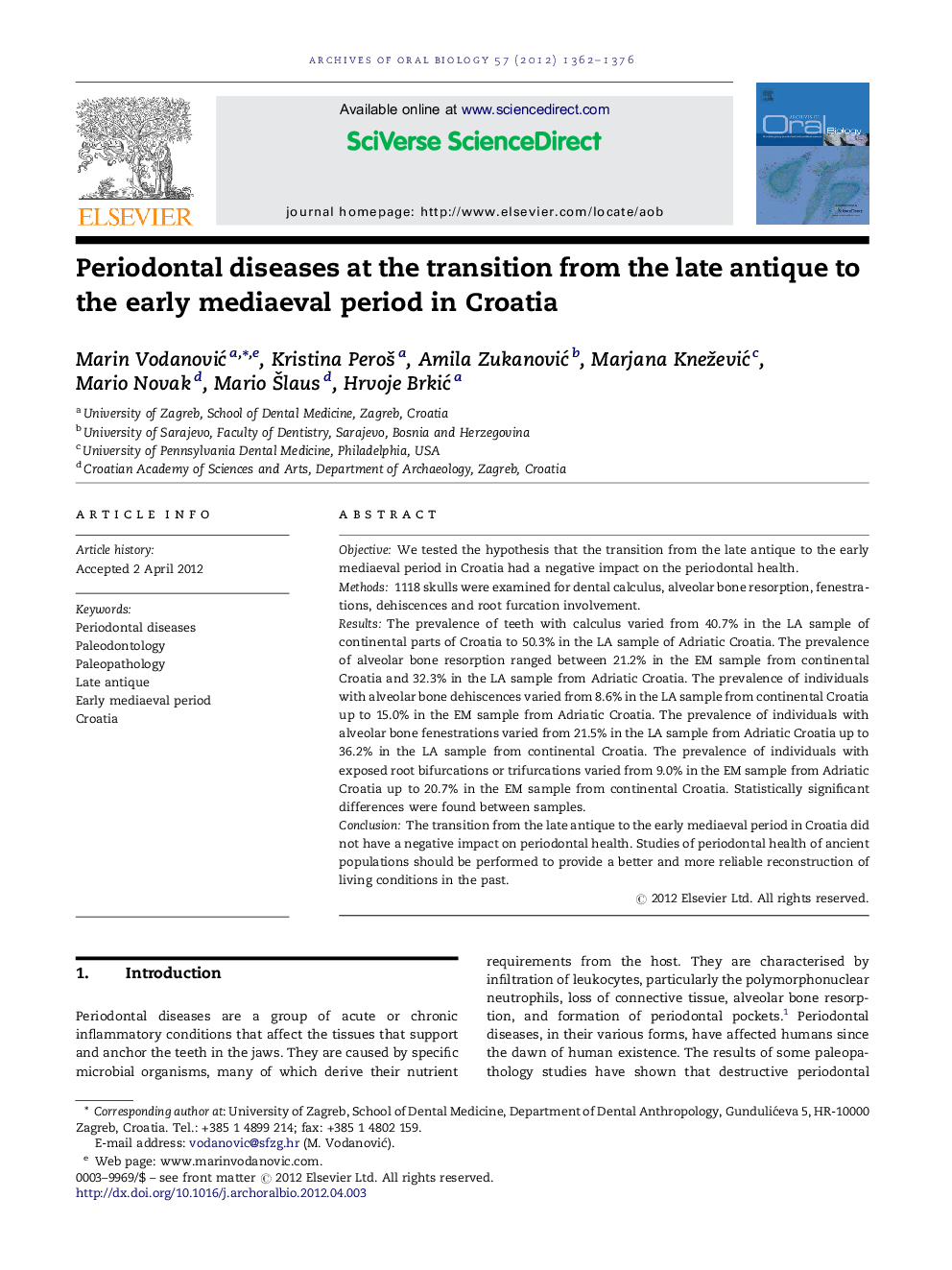| Article ID | Journal | Published Year | Pages | File Type |
|---|---|---|---|---|
| 6051803 | Archives of Oral Biology | 2012 | 15 Pages |
ObjectiveWe tested the hypothesis that the transition from the late antique to the early mediaeval period in Croatia had a negative impact on the periodontal health.Methods1118 skulls were examined for dental calculus, alveolar bone resorption, fenestrations, dehiscences and root furcation involvement.ResultsThe prevalence of teeth with calculus varied from 40.7% in the LA sample of continental parts of Croatia to 50.3% in the LA sample of Adriatic Croatia. The prevalence of alveolar bone resorption ranged between 21.2% in the EM sample from continental Croatia and 32.3% in the LA sample from Adriatic Croatia. The prevalence of individuals with alveolar bone dehiscences varied from 8.6% in the LA sample from continental Croatia up to 15.0% in the EM sample from Adriatic Croatia. The prevalence of individuals with alveolar bone fenestrations varied from 21.5% in the LA sample from Adriatic Croatia up to 36.2% in the LA sample from continental Croatia. The prevalence of individuals with exposed root bifurcations or trifurcations varied from 9.0% in the EM sample from Adriatic Croatia up to 20.7% in the EM sample from continental Croatia. Statistically significant differences were found between samples.ConclusionThe transition from the late antique to the early mediaeval period in Croatia did not have a negative impact on periodontal health. Studies of periodontal health of ancient populations should be performed to provide a better and more reliable reconstruction of living conditions in the past.
